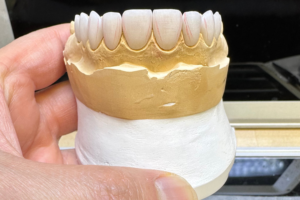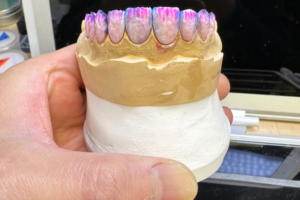 Zanaflex Withdrawal: Symptoms and Tapering Strategies
Zanaflex Withdrawal: Symptoms and Tapering Strategies
Recognizing Common Physical and Emotional Withdrawal Symptoms
You might notice tremors, sweating, nausea and muscle stiffness as your body adjusts; sleep becomes fragmented and appetite may falter. These physical signs can be sharp or subtle, occassionally peaking within days after stopping medication and triggering anxiety about the process.
Emotionally people report irritability, low mood, concentration problems and vivid dreams. Awareness helps: track symptoms, ask for medical guidance, and keep calm routines to reduce distress. If symptoms worsen or you notice severe palpitations, fever or confusion seek immediate care — support makes recovery Noticable and steadier, more quickly.
Typical Timeline: What to Expect during Withdrawal

The first few days after stopping zanaflex can feel abrupt: sleep is restless, muscles twitch, and anxiety rises. Many people report increased heart rate, sweating, nausea, and vivid dreams. These early symptoms usually peak within 48 to 72 hours, but intensity varies with dose and duration of use.
Between days 3 and 10, physical discomfort often gives way to stronger emotional waves—irritability, mood swings, and low motivation. Cravings for relief can be powerful; some experience flu-like aches and headaches. Occassionally insomnia persists, making recovery feel slower than expected.
After two weeks symptoms often ease, yet fatigue and cognitive fog may linger for several weeks. A gradual taper under medical supervision reduces severity and shortens timeline. Keeping a symptom journal and regular check-ins with your prescriber helps chart progress and address relapse risk. Support groups and mild exercise can aid recovery.
Severe Signs That Require Immediate Medical Attention
Detaching from zanaflex can feel manageable, but some reactions cross from uncomfortable to dangerous very quickly. Watch for sudden, severe symptoms such as new or worsening seizures, high and persistent blood pressure, chest pain, severe breathing difficulties, or profound confusion and fainting. Hallucinations, violent agitation, or suicidal thoughts are red flags. If any of these occured, treat them as medical emergencies; prompt evaluation can prevent escalation. Seek help without delay.
Act quickly: call emergency services or go to the nearest ER if you or someone else shows these signs. Bring pill bottles or a list of medications and report recent zanaflex dose and when it was stopped. Do not try to manage severe symptoms at home or drive if disoriented. Clinicians may stabilize vitals, give meds for seizures or agitation, and monitor for complications; timely intervention reduces risk during tapering.
Practical Tapering Strategies Your Doctor Might Recommend

Imagine tapering off zanaflex as a conversation between you and your clinician: small dose reductions every week or two, careful symptom tracking, and flexibility if withdrawal intensifies. Many prescribers cut by 10–25% of the dose at intervals, monitor sleep, mood, and muscle spasm, and may pause or slow the schedule if withdrawal spikes. Keep a daily log and share it so your doctor can recieve real-world data that guides adjustments.
Adjunct strategies often include temporary substitution with a longer-acting agent, short courses of symptomatic meds for insomnia or anxiety, and emphasizing hydration, nutrition, and gradual activity increases. Clear plans for emergency signs, follow-up appointments, and mental-health support reduce relapse risk. Expect the pace to be individualized — some need a few weeks, others several months — and trust a collaborative approach that prioritizes safety and comfort untill stability is achieved.
Nonpharmacological Supports to Ease Withdrawal Symptoms
Morning routines and small rituals can steady someone during medication shifts. I narrate a patient who found simple breathwork, regular sleep windows, and gentle movement helped when stopping zanaflex; these practices lower anxiety and muscle tension. Teh key is consistency: a predictable schedule, hydration, and balanced meals reduce swings and give a sense of control.
Complemental strategies include cognitive techniques, peer support groups, and therapists who teach pacing. Gentle excercise, stretching, massage and heat packs ease soreness; structured distraction and creative projects reduce rumination. Practical tools like relaxation apps, hydration alarms, and a daily journal track progress. Collaborate with your clinician for an individualized plan and know when symptoms exceed self-care and require immediate evaluation.
Longterm Recovery: Preventing Relapse and Building Resilience
Recovery unfolds as small, consistent steps. Patients often discover that structure—sleep, nutrition, gentle activity—reduces cravings and stabilizes mood, making setbacks less likely.
Building a relapse prevention plan with a clinician helps identify triggers and coping skills. Cognitive strategies, peer support, and scheduled check-ins create accountability and hope during fragile periods.
Learning to manage stress is crucial; simple breathing, mindfulness, and realistic goals reduce relapse risk. Encourage family involvement so patients Recieve practical reminders and emotional backing.
Long-term follow-up may include gradual therapy adjustments, screening for depression or pain, and skills training to manage daily challenges. Celebrate progress, plan for high-risk times, and remember recovery is nonlinear but Definately attainable with reliable support and ongoing check-ins. MedlinePlus: Tizanidine PubMed: tizanidine research












